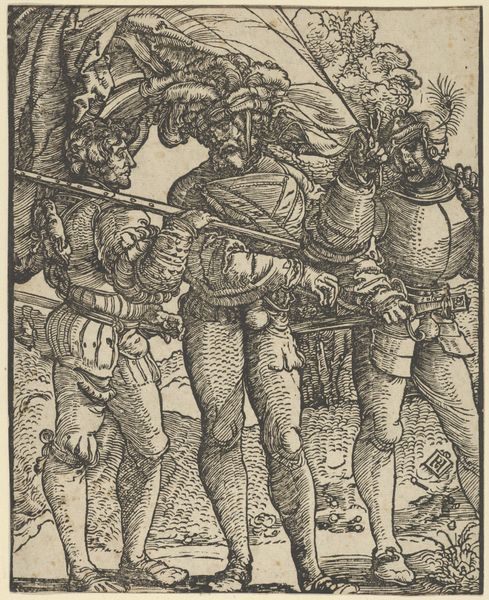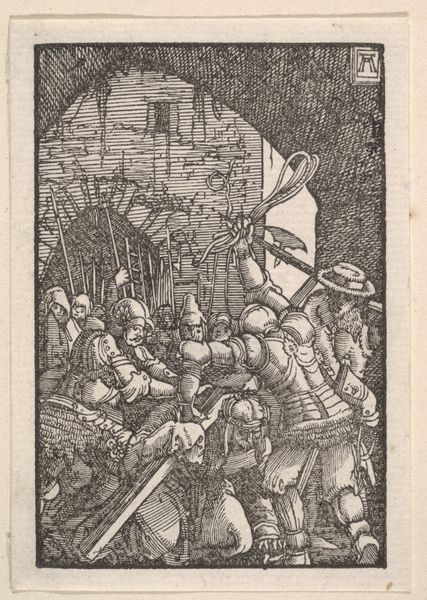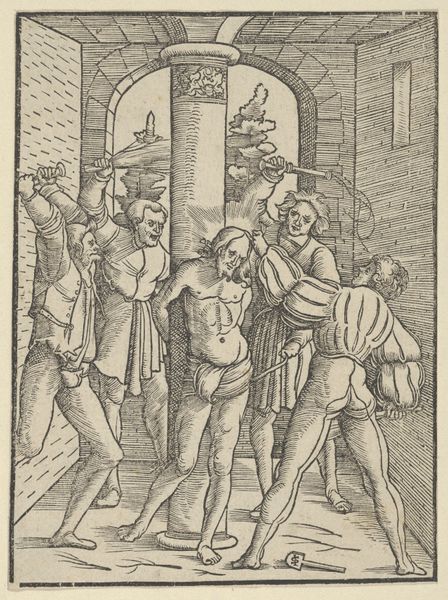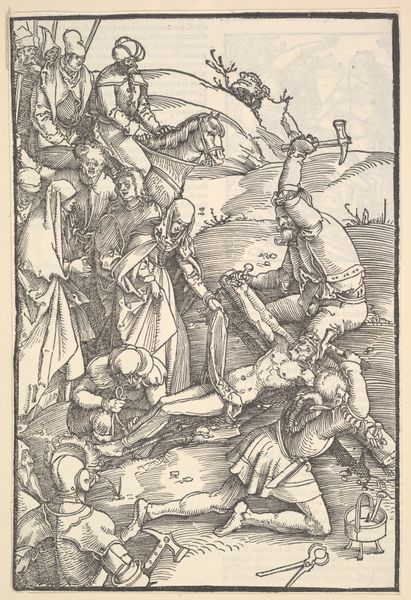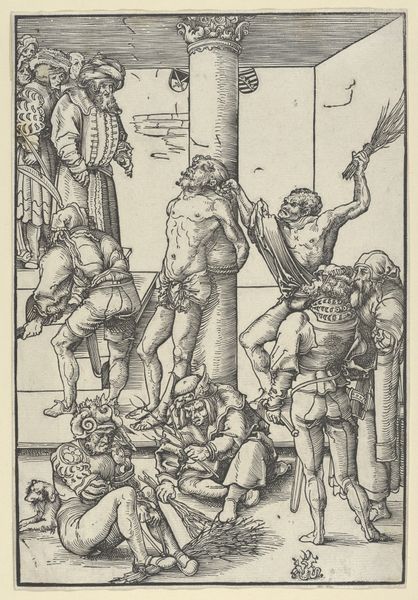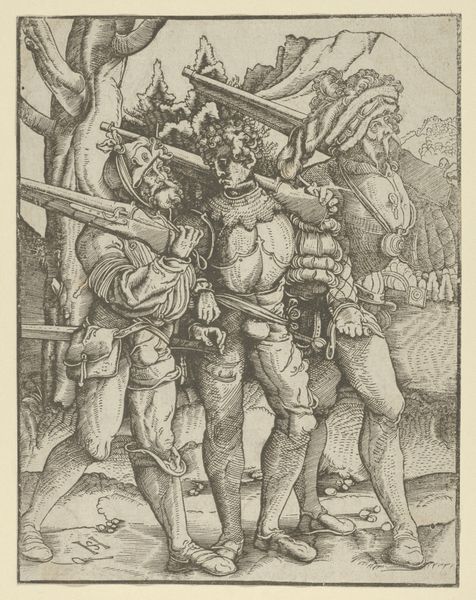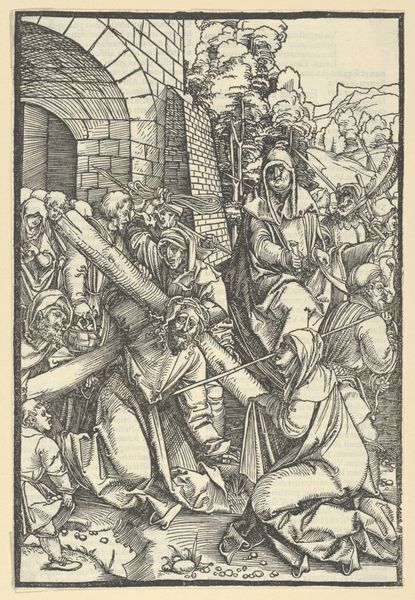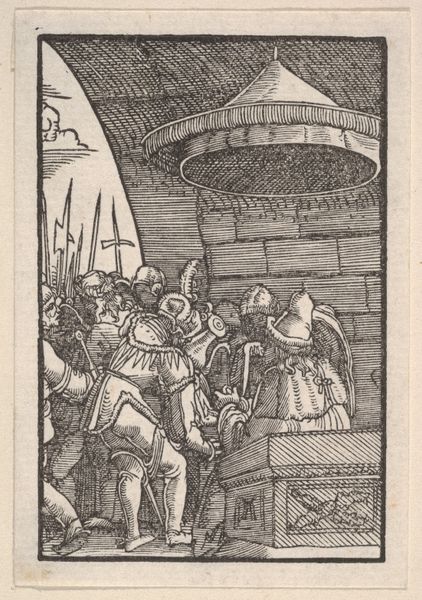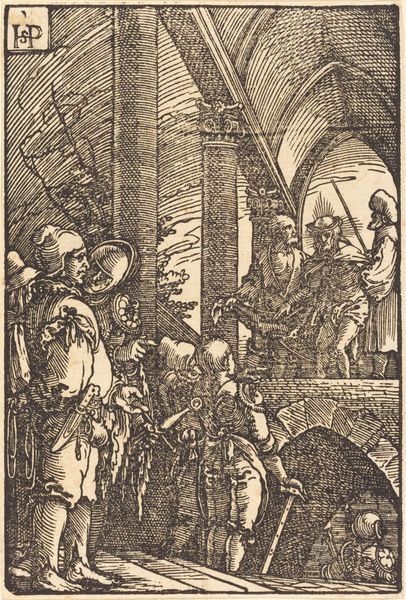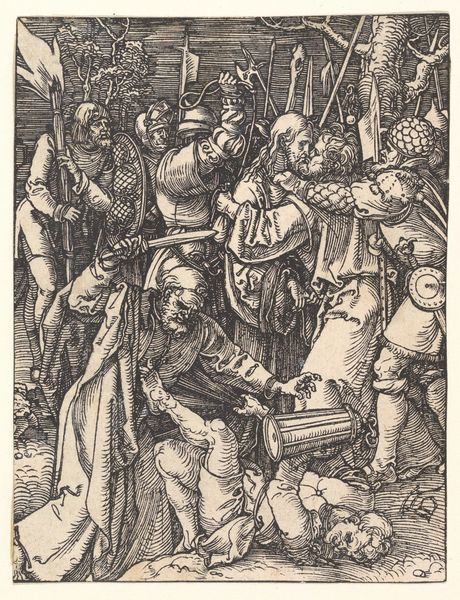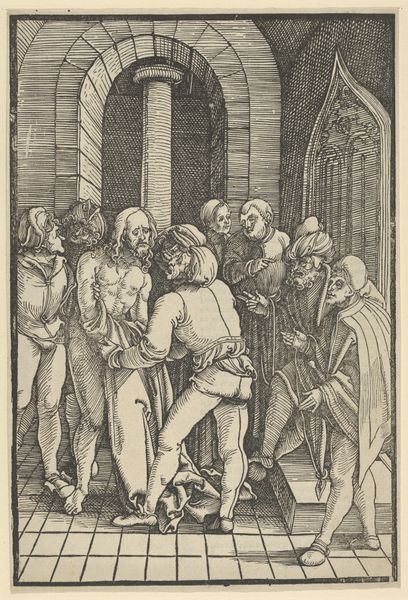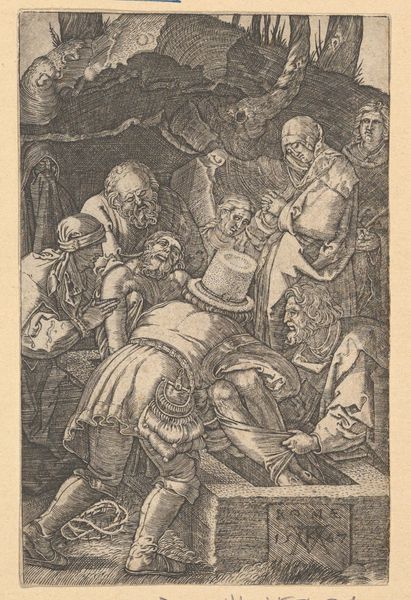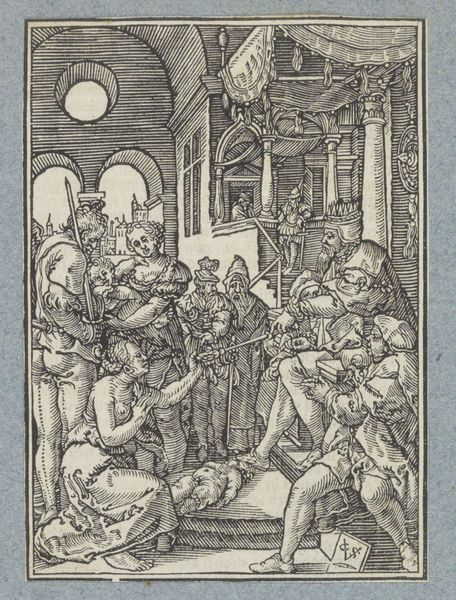
Dimensions: height 245 mm, width 173 mm
Copyright: Rijks Museum: Open Domain
Albrecht Dürer made this woodcut, Doornenkroning, which translates to the Crowning with Thorns, during a time of significant religious and social upheaval in Europe. Dürer lived through the rise of the Reformation, a period marked by challenges to the Catholic Church’s authority and widespread religious conflict. The print depicts Christ surrounded by his tormentors, a scene laden with themes of power, suffering, and spiritual defiance. Dürer’s detailed linework brings an intense emotional charge to the image. Look closely at the faces of the figures. How does Dürer capture the spectrum of human behavior, from the physical violence inflicted upon Christ to his serene acceptance of suffering? In the early 16th century, art served as a powerful medium for expressing religious and political viewpoints. Woodcuts like this one were relatively inexpensive to produce and distribute, making them accessible to a wide audience. Consider how Dürer used this medium to convey his personal and cultural anxieties, while reflecting on the complex relationship between faith, authority, and individual conviction.
Comments
No comments
Be the first to comment and join the conversation on the ultimate creative platform.
